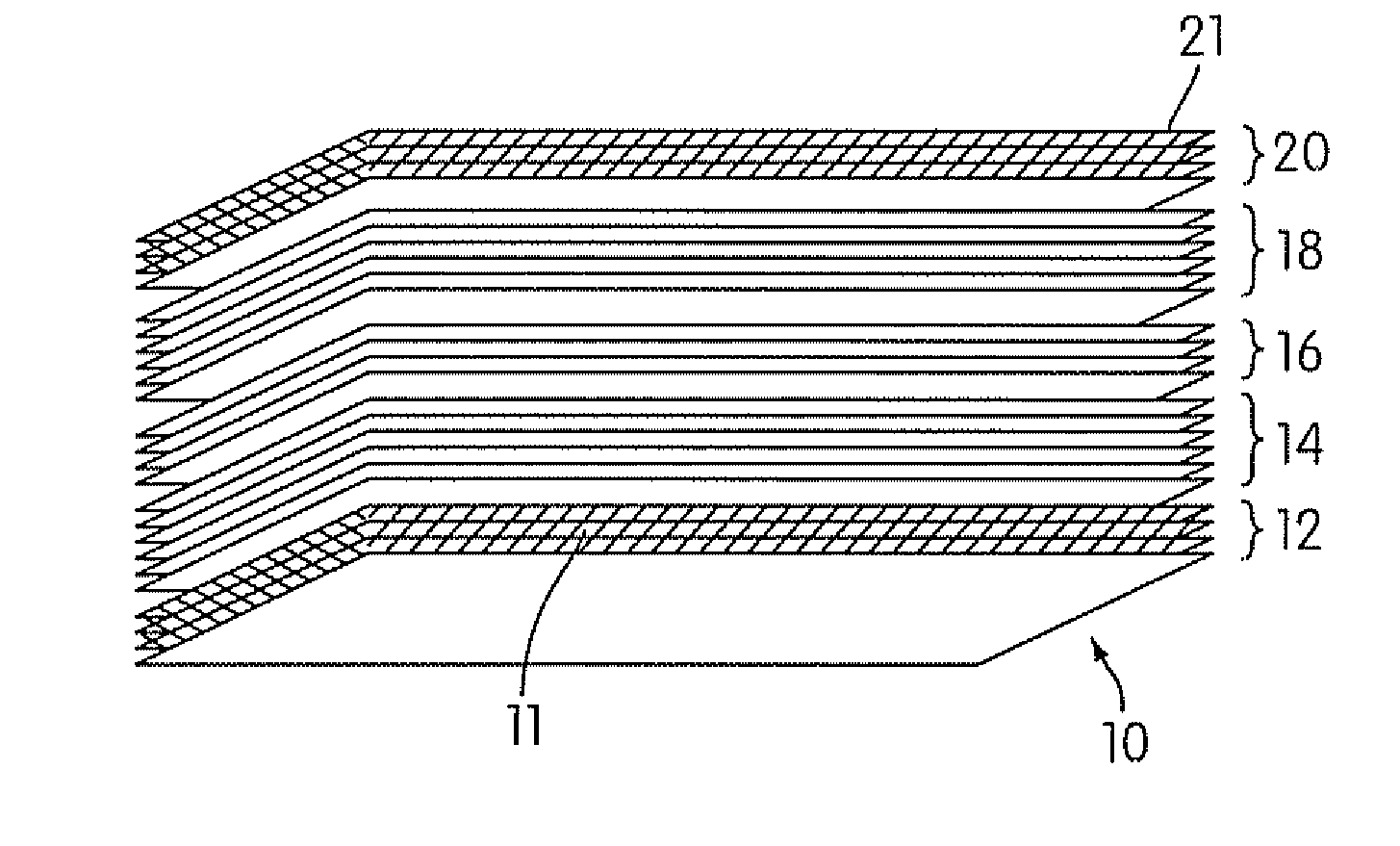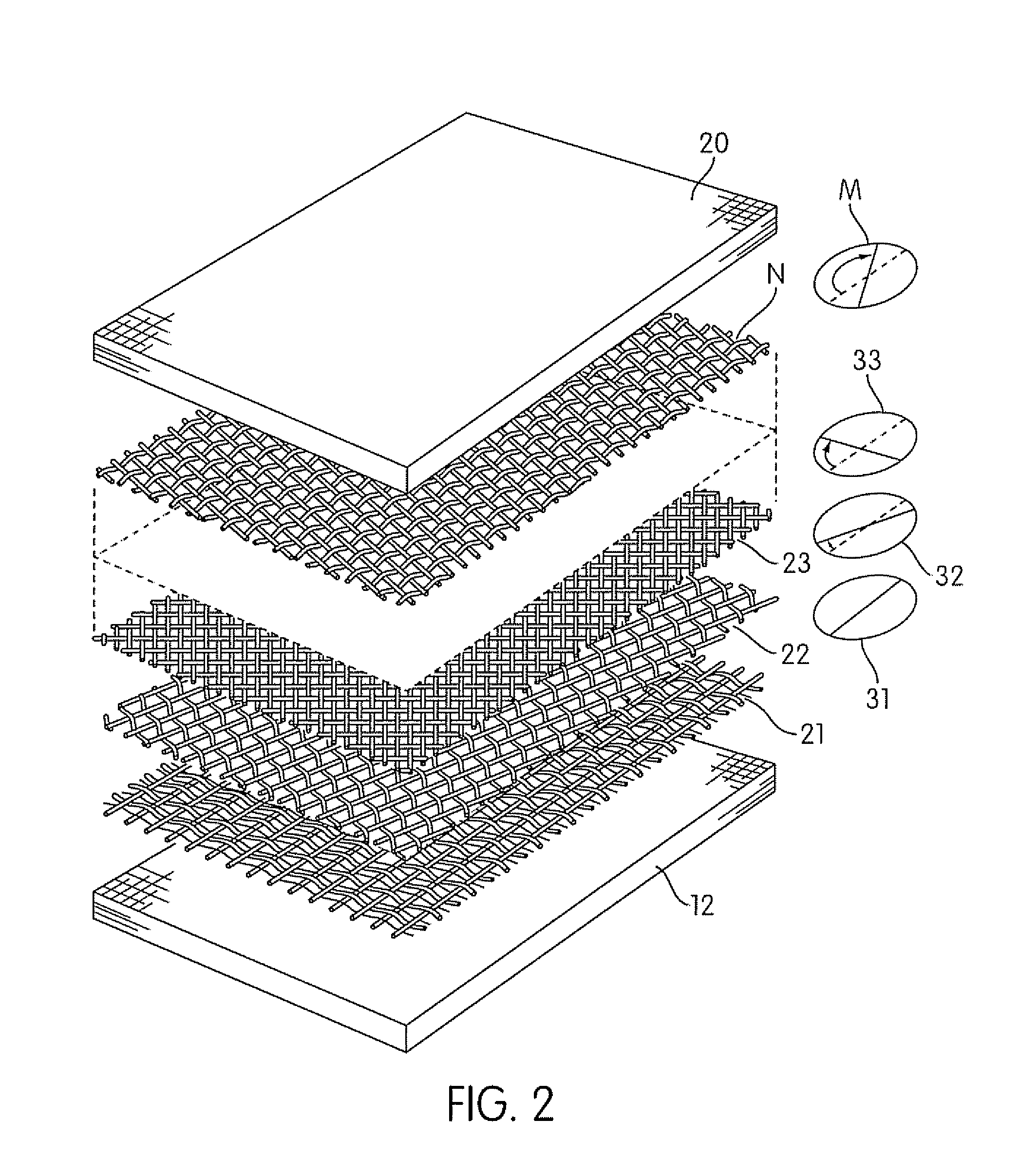Lightweight armor and ballistic projectile defense apparatus
a technology of ballistic projectiles and armor, applied in the field of armor materials and equipment, can solve the problems of reducing the penetration ability of soft vests, reducing the protection ability of wearers, and difficulty in providing easily retrofittable and/or transportable armor materials
- Summary
- Abstract
- Description
- Claims
- Application Information
AI Technical Summary
Benefits of technology
Problems solved by technology
Method used
Image
Examples
Embodiment Construction
[0044]Referring now to FIG. 1 of the drawing, an illustration is provided showing at 10 a stack of fabric layers of high strength woven or non-woven sheet material including five subsets of layers 12-20 in accordance with one embodiment of the present invention. As depicted, the first subset 12 includes 4 plys of woven carbon fiber cloth; the second subset 14 includes 6 plys of Kevlar 29® woven fabric made by E. I. du Pont de Nemours and Company; the third subset 16 includes 4 plys of carbon fiber cloth of the same type used in subset 12; the fourth subset 18 includes 6 plys of Kevlar 29® woven fabric of the same type used in subset 14; and the subset 20 includes 4 plys of carbon fiber cloth of the same type used in subset 12. As suggested by the hatching at 11 and 21, the carbon cloth layers of subsets 12 and 20 (and possibly subset 16) are impregnated with an epoxy resin so that when compressed and cured the form rigid front and back shells for the armor component. The layers form...
PUM
| Property | Measurement | Unit |
|---|---|---|
| yield strengths | aaaaa | aaaaa |
| thickness | aaaaa | aaaaa |
| thickness | aaaaa | aaaaa |
Abstract
Description
Claims
Application Information
 Login to View More
Login to View More - R&D
- Intellectual Property
- Life Sciences
- Materials
- Tech Scout
- Unparalleled Data Quality
- Higher Quality Content
- 60% Fewer Hallucinations
Browse by: Latest US Patents, China's latest patents, Technical Efficacy Thesaurus, Application Domain, Technology Topic, Popular Technical Reports.
© 2025 PatSnap. All rights reserved.Legal|Privacy policy|Modern Slavery Act Transparency Statement|Sitemap|About US| Contact US: help@patsnap.com



